© Sucesión Picasso, VEGAP, Madrid, 2024.
The early years of Pablo Picasso's artistic life were marked by his interest in learning from the great Spanish masters. The son of a drawing teacher, after an initial training in A Coruña, he entered Fine Arts in Barcelona at the early age of fourteen, in 1895. During this formative stage, Picasso spent time in the studio of the painter José Garnelo Alda, located at the university, on his father's recommendation to complement his training.
In 1897, Picasso passed the entrance exam to the Royal Academy of San Fernando, in Madrid. During this period the young artist spent more time copying the masters in the Prado Museum than in the rooms of the Academy, showing admiration for the masters of Spanish painting, especially El Greco, Velázquez and Goya.
With Goya he shared a fascination for bullfighting, indignation at the cruelties of the world, and freedom of tone and creation as addressed in the exhibition Goya in Picasso's Gaze at the Musée Goya in Castres, as part of the Picasso Celebration 1973-2023.
His admiration for El Greco was also evident and persistent in his work throughout his career as has been seen in the course of the Celebration in Picasso - El Greco at the Kunstmuseum Basel or with Picasso, El Greco and analytical cubism at the Museo Nacional de Prado. The project Diego Velázquez invites Pablo Picasso... and Carmen Calvo of the Museu Picasso Barcelona and Casa de Velázquez at its headquarters in Madrid deals with Picasso's admiring relationship with the Sevillian.
In 1904, Picasso, at the age of twenty-three, moved to Paris, where he discovered new sources of inspiration. In that year his interest shifted to Jean-Auguste Dominique Ingres, exhibited at the Musée du Louvre, as part of a retrospective on the occasion of the 1905 Salon d'Automne, the official exhibition of the Royal Academy of Painting and Sculpture, founded in 1648, which since 1663 has organized an annual exhibition of painting and sculpture.
It was also at the Louvre that he discovered Eugène Delacroix, of whose Femmes d'Alger dans leur appartement (1834) he produced an extensive series between 1954 and 1955.
From 1904 onwards, the artist from Malaga frequented bars and workshops in Paris where he met artists such as Toulouse-Lautrec, Gauguin, Degas, Matisse and Marie Laurencin. These encounters provided him with a rich diversity of inspirations from his contemporaries or from extemporaneous characters such as Henri Rousseau, called "the customs officer Rosseau" because of his profession and whose Portrait of a Woman of 1895 is today part of the Musée national Picasso-Paris as part of his private collection.
In 1906 he discovered African art in Paris. It is still debated today the exact moment, at the beginning or at the end of that year and the way: during an evening at Gertrude Stein's house, writer and friend of Picasso or by his visits to the Musée d'Ethnographie du Trocadéro. The simplification of forms and the elongated representation of faces and silhouettes adopted by these influences and the "primitivism" of Iberian art or Pyrenean Romanesque art became distinctive elements in his work as introduced in the exhibition Picasso 1906: The Great Transformation, at the Museo Nacional Centro de Arte Reina Sofía. It presents Picasso's initial contribution to the definition of "modern art" and how 1906 was a unique and significant artistic period in his creative evolution.
Many other contemporary painters will be impelled to these languages so far from the Western canon as Matisse and Derain and in dialogue with them will advance towards a new language: In the piece Study for the head of 'Nude with cloths' (1907) Picasso was inspired by the works of Bathers (1907) by Derain and Blue Nude (1907) by Matisse.
A year later, in November 1907, Guillaume Apollinaire, poet and great friend of Picasso, organized the first meeting between Picasso and George Braque and, from that moment on, both artists began to work together. Together, they experimented with the decomposition of forms and the simultaneous representation of different perspectives, giving rise in the fall of 1911 to analytical cubism.
Sources:
Musée national Picasso-París:
https://www.museepicassoparis.fr/fr/les-influences-de-picasso
Museo Nacional Thyssen- Bornemisza:
https://www.museothyssen.org/coleccion/artistas/picasso-pablo/estudio-cabeza-desnudo-panos
Museo Nacional Thyssen-Bornemisza. https://www.museothyssen.org/coleccion/artistas/picasso-pablo/hombre-clarinete
Musée national Picasso-Paris. (s.f.). Picasso et le cubisme. https://www.museepicassoparis.fr/fr/picasso-et-le-cubisme
The Museum of Modern Art (MoMA). (1989). Picasso and Braque: Pioneering cubism [PDF]. Recuperado de https://www.moma.org/documents/moma_catalogue_1730_300062926.pdf?_ga=2.219470489.1632124421.1686818372-64185839.1686818372
Museo Nacional de Arte (MUNAL). Cronología de salones.
https://www.munal.mx/micrositios/placeryorden/descargables/Cronologia.pdf

